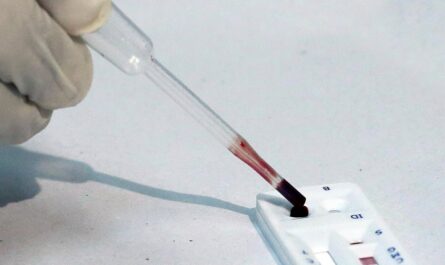Lyme disease is a bacterial infection caused by Borrelia burgdorferi and other species belonging to the Borrelia burgdorferi complex. It is transmitted through the bites of infected blacklegged ticks, commonly known as deer ticks. According to the Centers for Disease Control and Prevention (CDC), Lyme disease is the most common vector-borne illness in the United States. Despite widespread awareness about Lyme disease, diagnosis and treatment can often be challenging.
Early Treatment
Lyme disease is usually easiest to treat in its early stages, when the infection is still localized near the site of the tick bite. According to guidelines from the Infectious Diseases Society of America (IDSA), recommended treatment for early localized Lyme disease involves oral antibiotics like doxycycline, amoxicillin or cefuroxime axetil for 14 to 21 days. These antibiotics are highly effective at clearing the infection if treatment is provided promptly. Patients usually recover rapidly and experience relief from symptoms like fatigue, fever and joint pain. However, it is important to seek medical care immediately if one suspects a tick bite, so diagnosis and treatment can be provided as early as possible for best outcomes.
Later Stage Treatment
If Lyme disease is not treated early or treatment is delayed, the infection can spread to other parts of the body through the bloodstream. In its later disseminated stage, the infection may affect joints, the heart or the nervous system. The recommended treatment for later Lyme disease involves intravenous (IV) antibiotics. For neurologic or cardiac involvement, the IDSA recommends IV ceftriaxone or penicillin for 2 to 4 weeks. For cases of severe joint involvement without these complications, IV ceftriaxone or oral doxycycline plus IV ceftriaxone may be administered. The goal is to halt further progression of the illness through more intensive treatment, though symptoms may persist even after adequate treatment.
Treatment for Persistent Symptoms
In some cases, symptoms like fatigue, pain, or cognitive difficulties linger even after standard antibiotic Lyme Disease Treatment. This condition is commonly termed “post-treatment Lyme disease syndrome” (PTLDS) by the CDC. For PTLDS, there is no strong evidence that prolonged or repeated antibiotic therapy provides meaningful benefits according to the IDSA and CDC. Instead, treatment typically focuses on symptom management with NSAIDs, corticosteroids, physical therapy, cognitive behavioral therapy, exercise and adequate rest. More research is ongoing into other potential treatment avenues for persistent Lyme symptoms.
Herbal and Alternative Treatments
Beyond conventional antibiotic therapy, some Lyme disease patients may consider alternative or herbal treatments as part of their treatment regimen. However, there is limited scientific evidence supporting the efficacy and safety of such options. Popular ones include:
– Herbal antimicrobials: Herbs with presumed antimicrobial properties like cat’s claw, Japanese knotweed, Chinese skullcap and andrographis have been used. However, clinical proof is lacking and there are possible herb-drug interactions to consider.
– Probiotics: Supplementing good bacteria through foods or probiotic supplements aims to balance gut and immune function. Emerging research associates probiotic use with reduced Lyme disease infection risk.
– Buhner protocol: Developed by herbalist Stephen Buhner, this individualized herbal protocol features extracts from 20+ plants meant to strengthen the immune system and battle various Borrelia bacteria strains. Safety and efficacy reviews are in early stages.
– Hyperbaric oxygen therapy (HBOT): This involves inhaling pure oxygen in a pressurized chamber, with the aim of combating infection and related inflammation. Evidence from small studies is preliminary and conflicting.
– Cryotherapy: brief exposure to subfreezing temperatures through cryosaunas, cryochambers or ice baths aims to relieve symptoms, though evidence is limited to case reports.
While alternative therapies may offer complementary support, conventional antibiotics remain the standard of care for established Lyme disease according to clinical guidelines. Patient safety should be prioritized by consulting medical practitioners, particularly regarding potential contraindications for supplements or gene therapies.
As Lyme research continues expanding our understanding, diagnosis and treatment will likely evolve. For now, preventing tick bites and promptly removing attached ticks remain the best defenses against contracting Lyme disease. Seeing a doctor immediately following a potential exposure or if symptoms develop can help catch the infection early, when treatment outcomes are most favorable. With awareness and appropriate medical guidance, most Lyme patients can expect a full recovery.
*Note:
1. Source: Coherent Market Insights, Public sources, Desk research
2. We have leveraged AI tools to mine information and compile it



